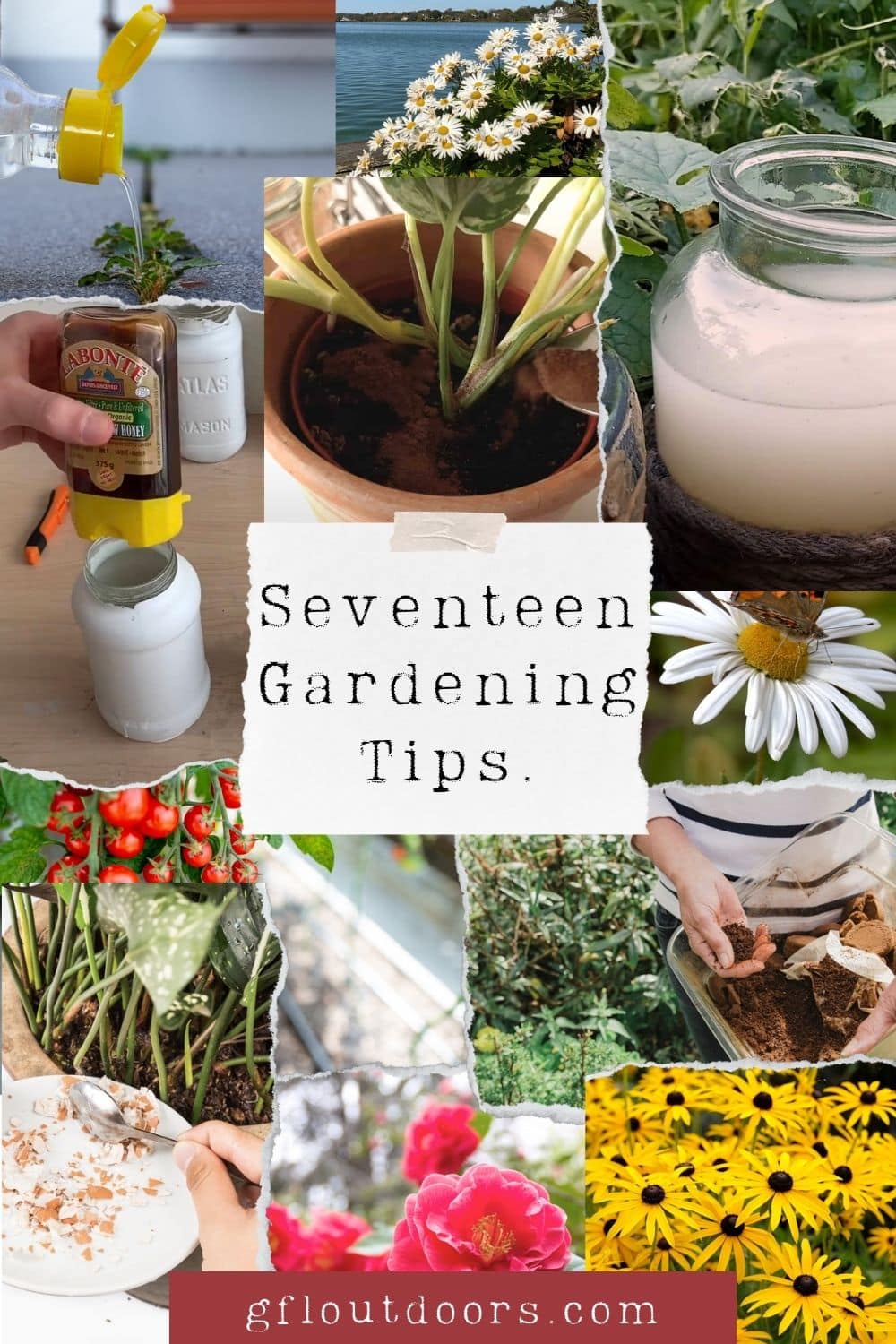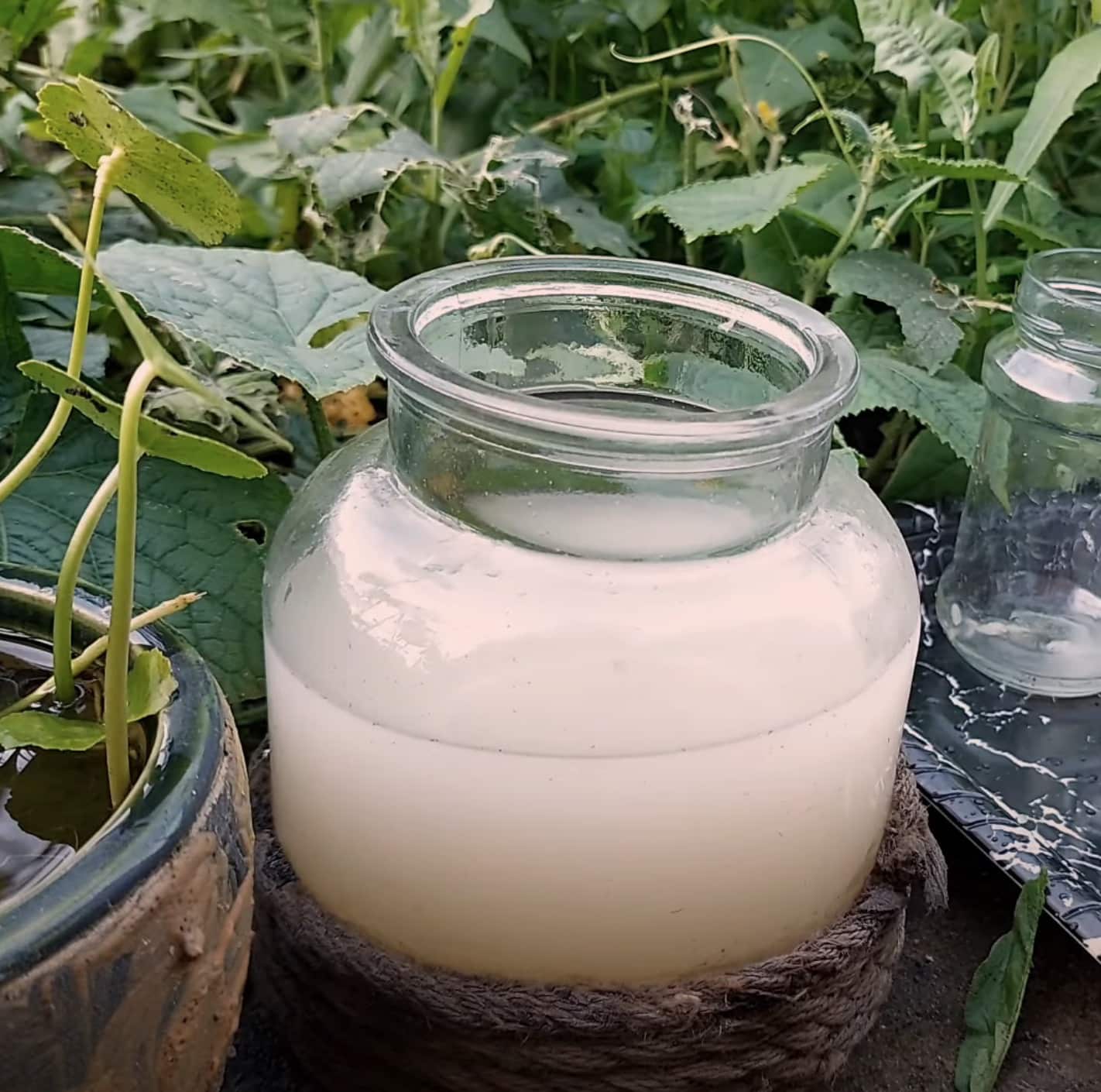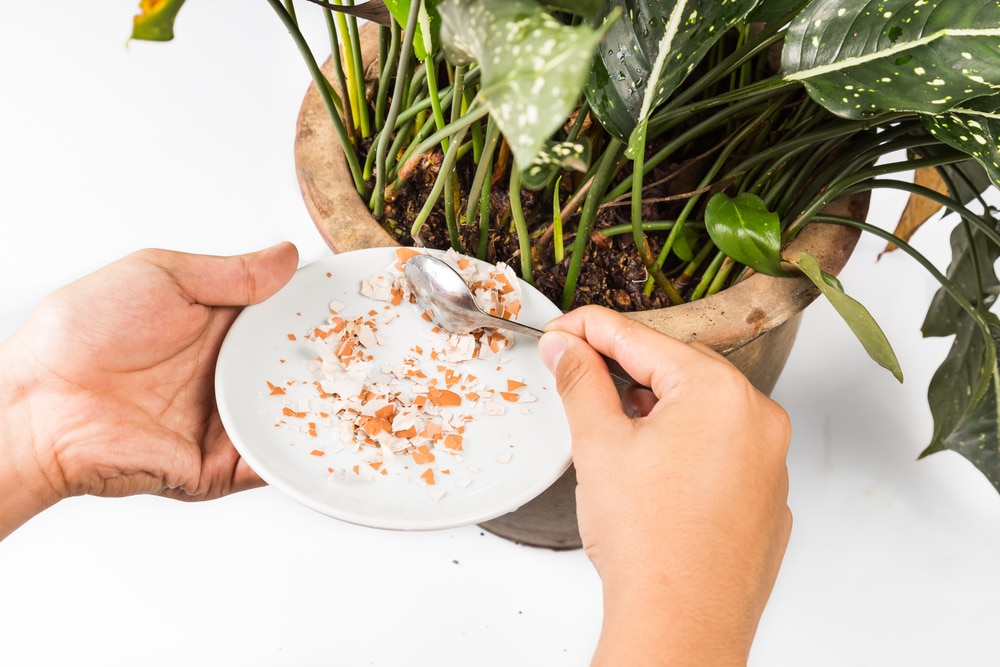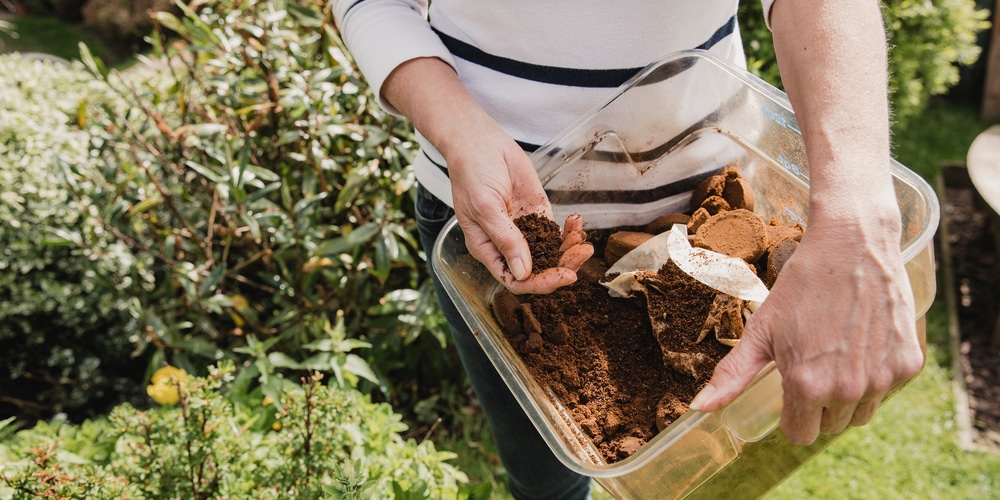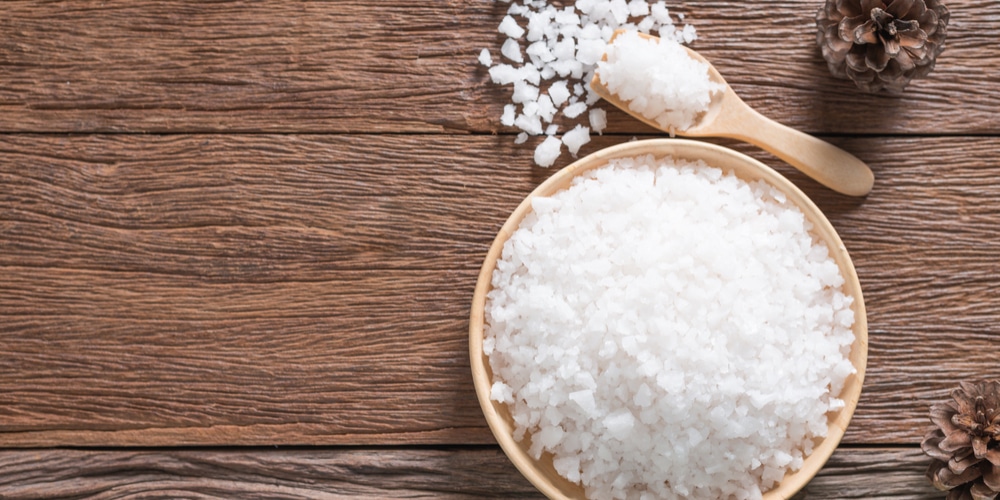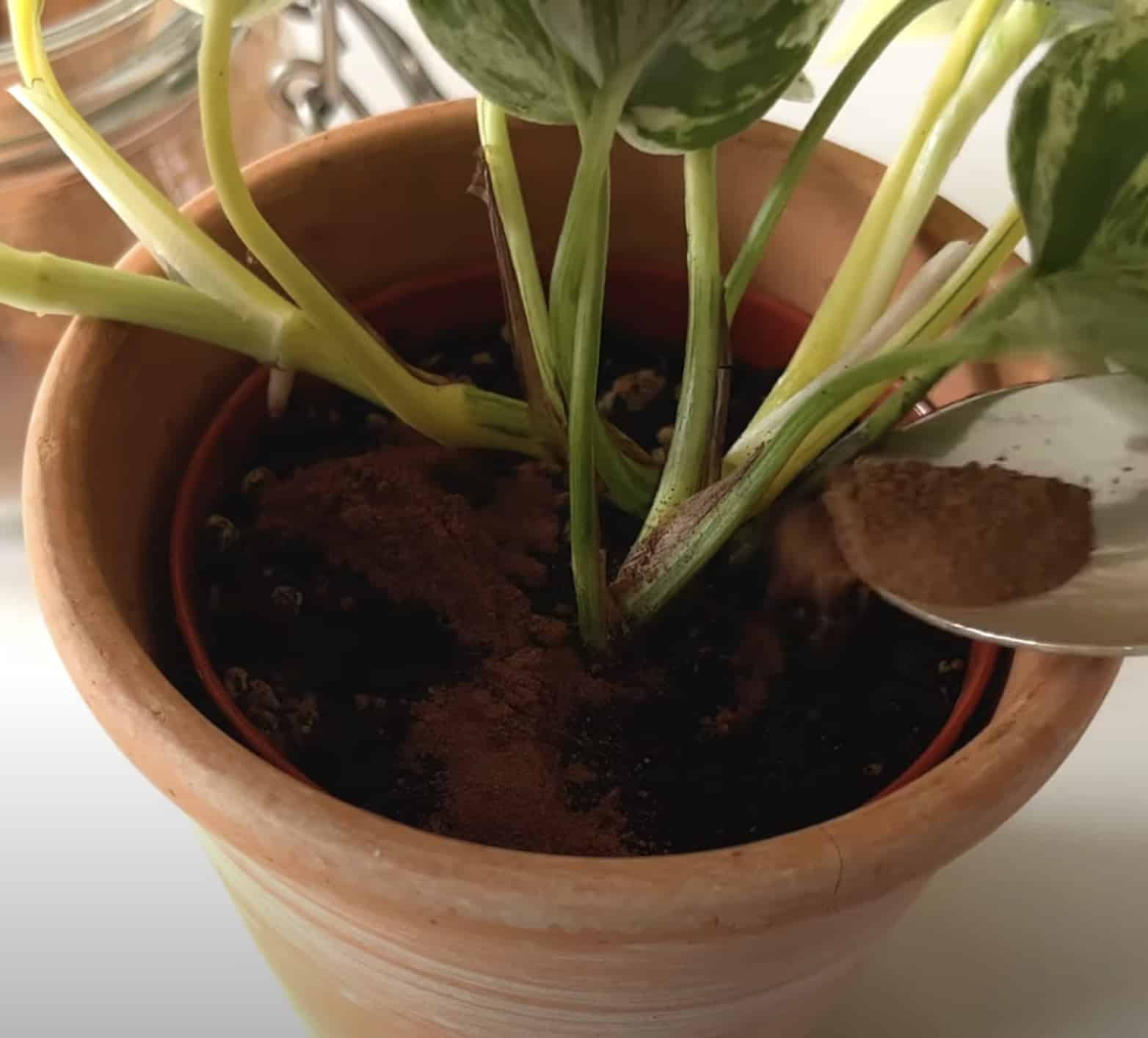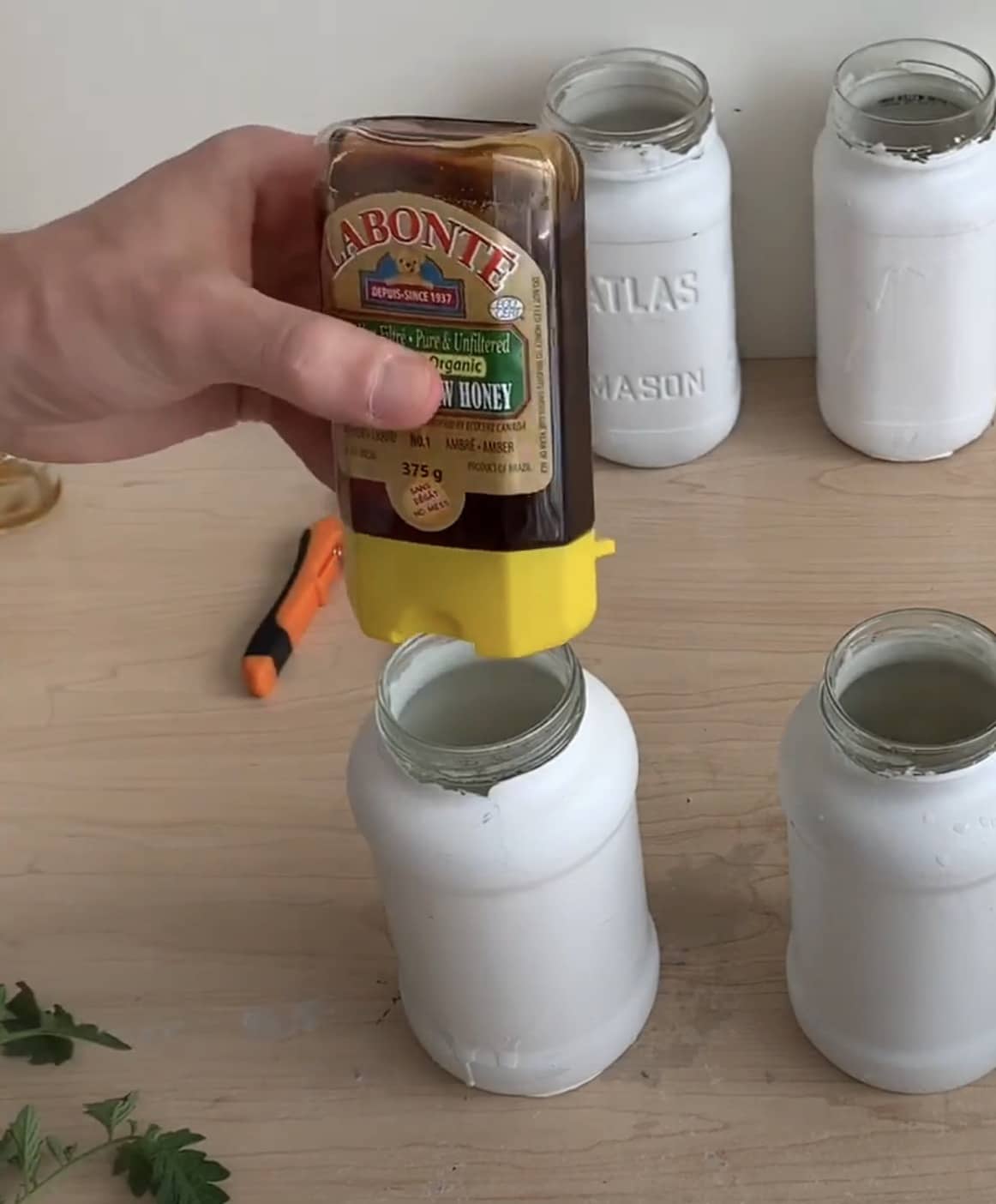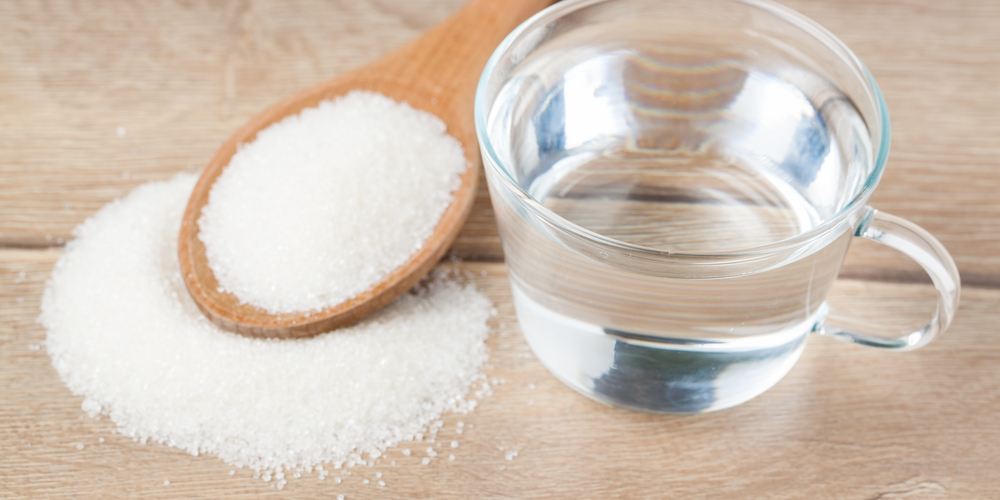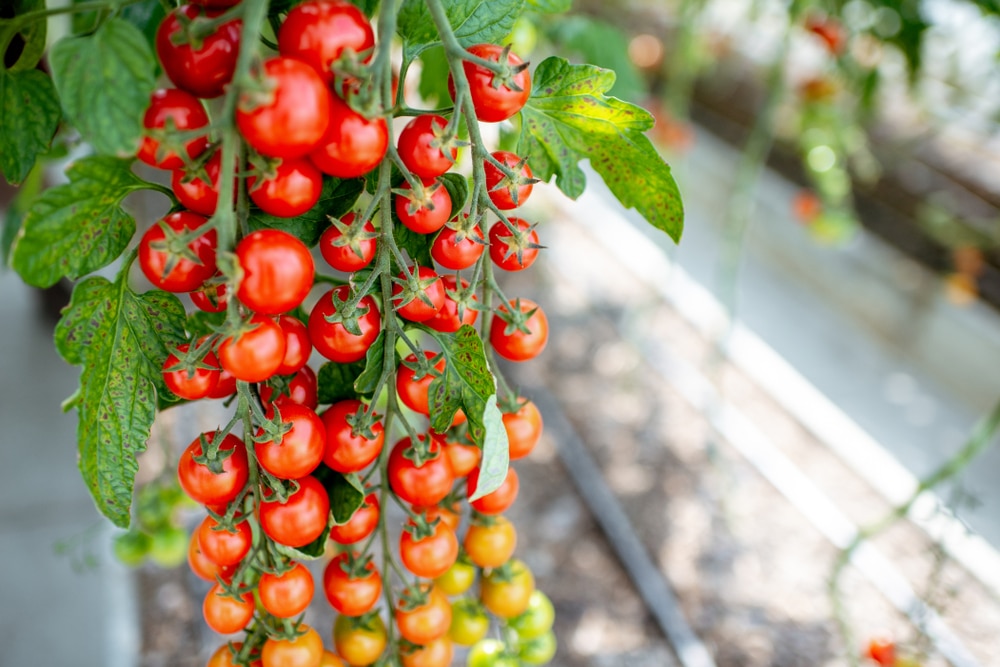Whether you have a spacious backyard, a tiny balcony, or a sunny windowsill, gardening can bring beauty, peace, and a connection to nature.
With a few clever techniques, anyone can make their gardening efforts more productive and enjoyable.
Here are 17 handy gardening tips to help beginners and seasoned gardeners alike grow their skills. From boosting soil health to keeping pests at bay, these ideas are sure to elevate your gardening game.
1. Use Rice Water to Nourish Roots
How-To: After rinsing rice, save the water, let it cool, and use it to water your plants weekly.
Why It Works: Packed with minerals and nutrients, rice water promotes healthy root growth and supports beneficial soil bacteria.
When to Use: Rice water is ideal for most houseplants, vegetables, and flowering plants that need an occasional nutrient boost. Avoid using it on succulents or cacti, which prefer dry, nutrient-poor conditions.
Pros: Rice water is a free and natural fertilizer that improves root health and boosts beneficial soil microbes. It’s easy to collect and recycle during meal prep.
Cons: Overuse can lead to an imbalance in soil nutrients or attract pests if not applied carefully. Ensure it’s used sparingly to avoid creating overly soggy soil.
Best Plants: Thrives on leafy greens, herbs, and flowering plants like geraniums and marigolds.
2. Eggshells: A Calcium Powerhouse
How-To: Rinse, dry, and crush eggshells, then sprinkle them around plants or mix into the soil.
Why It Works: Eggshells supply calcium, helping prevent issues like blossom end rot in crops like tomatoes.
When to Use: Eggshells are great for gardens with calcium deficiencies, especially for tomatoes, peppers, and squash. Not recommended for immediate results as they decompose slowly.
Pros: Eco-friendly and rich in calcium, eggshells prevent blossom-end rot and enrich soil over time. They are also a great way to reuse kitchen scraps.
Cons: Eggshells take time to break down, so they’re not suitable for quick fixes. Crushing them finely speeds up decomposition.
Best Plants: Tomato plants, peppers, squash, and plants with heavy fruiting needs benefit most.
3. Revive Plants with Hydrogen Peroxide
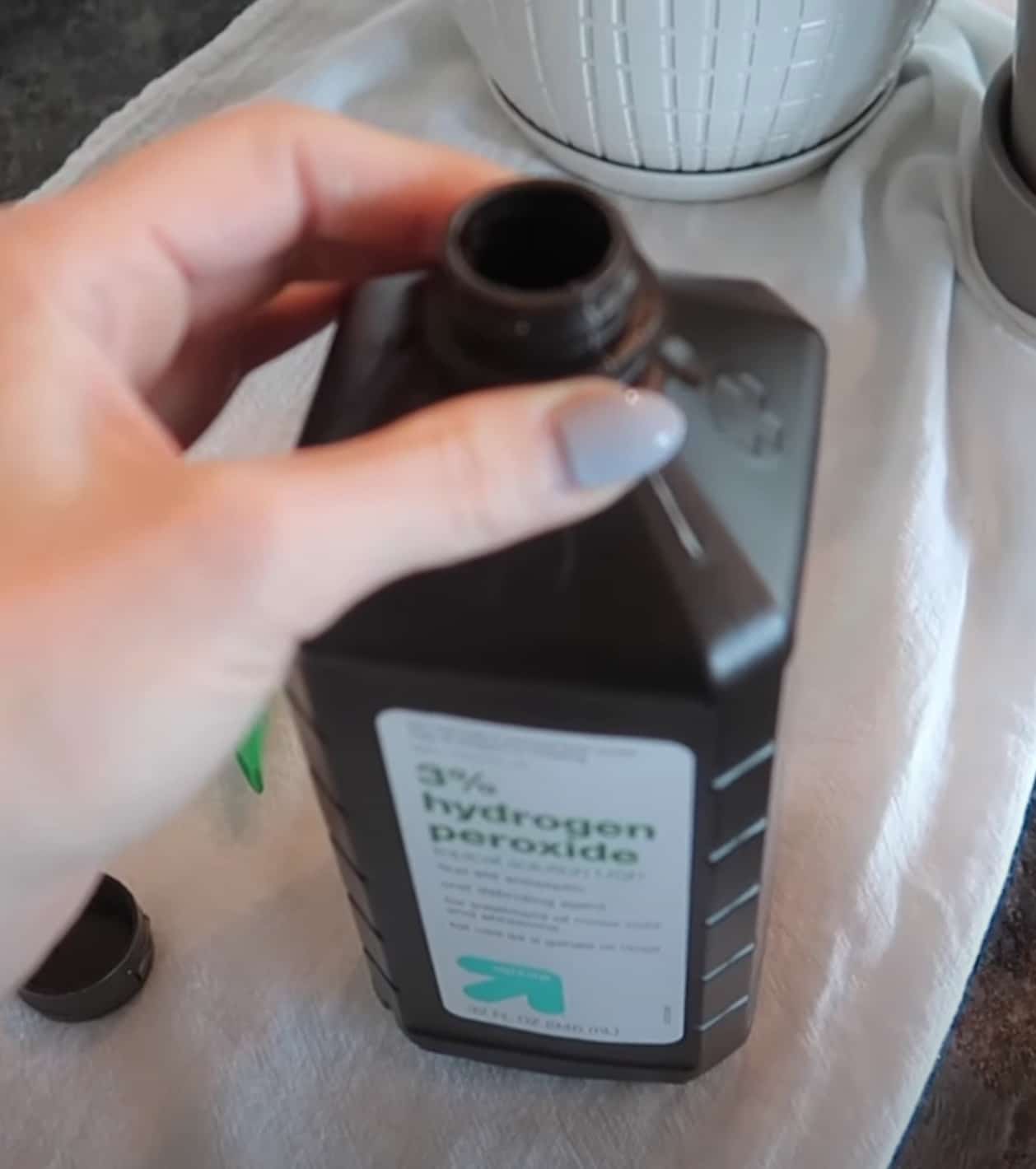
How-To: Combine one part 3% hydrogen peroxide with ten parts water. Use this mixture to water plants monthly.
Why It Works: This solution adds oxygen to the soil and combats fungal and bacterial infections.
When to Use: Use when plants show signs of root rot, yellowing leaves, or poor growth due to overwatering. It’s a quick fix for oxygen-starved roots.
Pros: Affordable and effective, hydrogen peroxide improves root health and combats diseases. It’s also safe for most plants when diluted properly.
Cons: Overuse can harm beneficial microbes and disrupt the soil ecosystem. Always test soil moisture before application.
Best Plants: Works well on houseplants, herbs, and vegetables suffering from overwatering or root disease.
4. Hydrogen Peroxide to Protect Your Plants
5. Banana Peels for Fertilizer
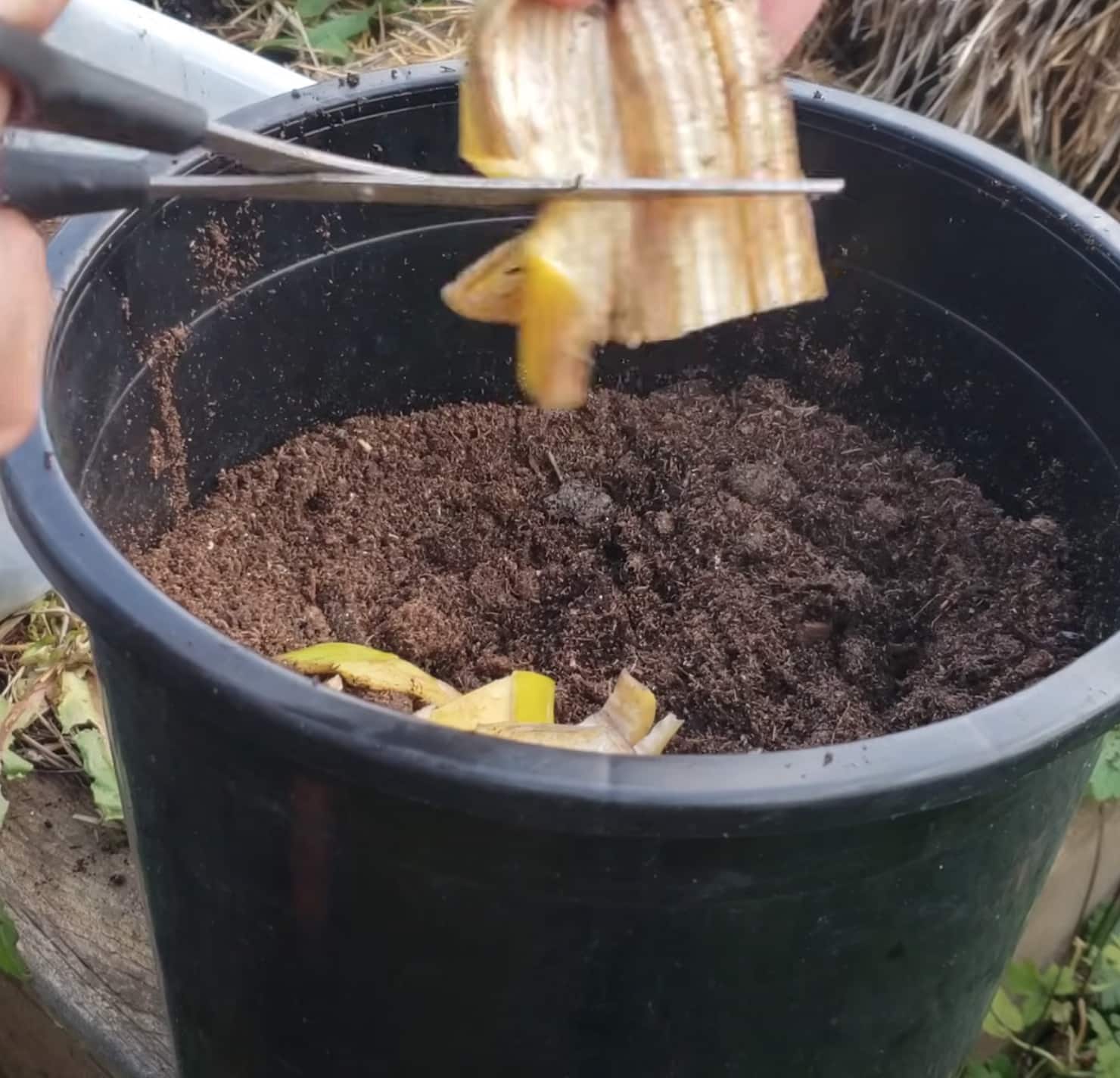
How-To: Chop up banana peels and bury them near plant roots.
Why It Works: Banana peels break down to release potassium, phosphorus, and calcium—key nutrients for flowering plants.
When to Use: Ideal during flowering and fruiting stages for plants needing potassium and phosphorus. Avoid use in areas with pest problems, as peels can attract them.
Pros: Banana peels decompose naturally, enriching soil with vital nutrients and improving plant health. They’re a cost-free fertilizer.
Cons: May attract pests like ants or rodents if not buried properly. Use in moderation to prevent imbalances in the soil.
Best Plants: Tomatoes, roses, and flowering plants like hibiscus and marigolds thrive with banana peel fertilizer.
6. Coffee Grounds for Acid-Loving Plants
How-To: Mix used coffee grounds into soil or use them as mulch around plants like azaleas and blueberries.
Why It Works: Coffee grounds enrich soil with nitrogen and provide mild acidity.
When to Use: Perfect for gardens with plants that prefer acidic soil. Avoid using them excessively, as they can lead to nitrogen buildup.
Pros: Coffee grounds improve soil texture, add nitrogen, and repel pests like slugs. They’re readily available and biodegradable.
Cons: Excessive use may lead to overly acidic soil or nitrogen overload. Composting the grounds first is safer.
Best Plants: Blueberries, azaleas, hydrangeas, and roses love coffee grounds.
7. Greener Leaves with Epsom Salt
How-To: Dissolve a tablespoon of Epsom salt in a gallon of water and use it monthly on plants.
Why It Works: Epsom salt delivers magnesium, which supports photosynthesis and nutrient absorption.
When to Use: Apply when plants show signs of magnesium deficiency, such as yellowing between leaf veins. Not suitable for soils already rich in magnesium.
Pros: Epsom salt enhances photosynthesis and improves overall plant health. It’s a quick and affordable solution.
Cons: Overapplication can harm soil balance and burn plant roots. Use sparingly and only after testing soil magnesium levels.
Best Plants: Tomatoes, peppers, roses, and houseplants benefit from Epsom salt applications.
8. Cinnamon to Ward Off Fungi
How-To: Sprinkle cinnamon powder on soil around seedlings.
Why It Works: Cinnamon’s natural antifungal properties protect young plants from damping-off disease.
When to Use: Use when planting seeds or when fungal issues appear on seedlings. It’s safe for most plants and an excellent preventive measure.
Pros: Cinnamon is an inexpensive, natural antifungal that’s safe for humans, pets, and the environment.
Cons: It won’t cure existing fungal issues on mature plants and must be reapplied regularly. Not effective against all types of fungi.
Best Plants: Ideal for seedlings, indoor plants, and delicate crops like herbs and greens.
9. Milk as a Mildew Remedy
How-To: Dilute milk with water (1:2 ratio) and spray on plants affected by powdery mildew.
Why It Works: Milk’s antifungal qualities can both treat and prevent mildew.
When to Use: Apply at the first sign of powdery mildew or as a preventive measure in humid conditions. Avoid using too often to prevent mold growth.
Pros: Milk is a natural, eco-friendly solution to a common plant problem. It’s readily available and cost-effective.
Cons: Excessive use can lead to unpleasant odors or moldy residue. Dilution is crucial for effectiveness.
Best Plants: Cucumbers, squash, zucchini, and roses benefit most from milk sprays.
10. Aspirin to Boost Plant Immunity
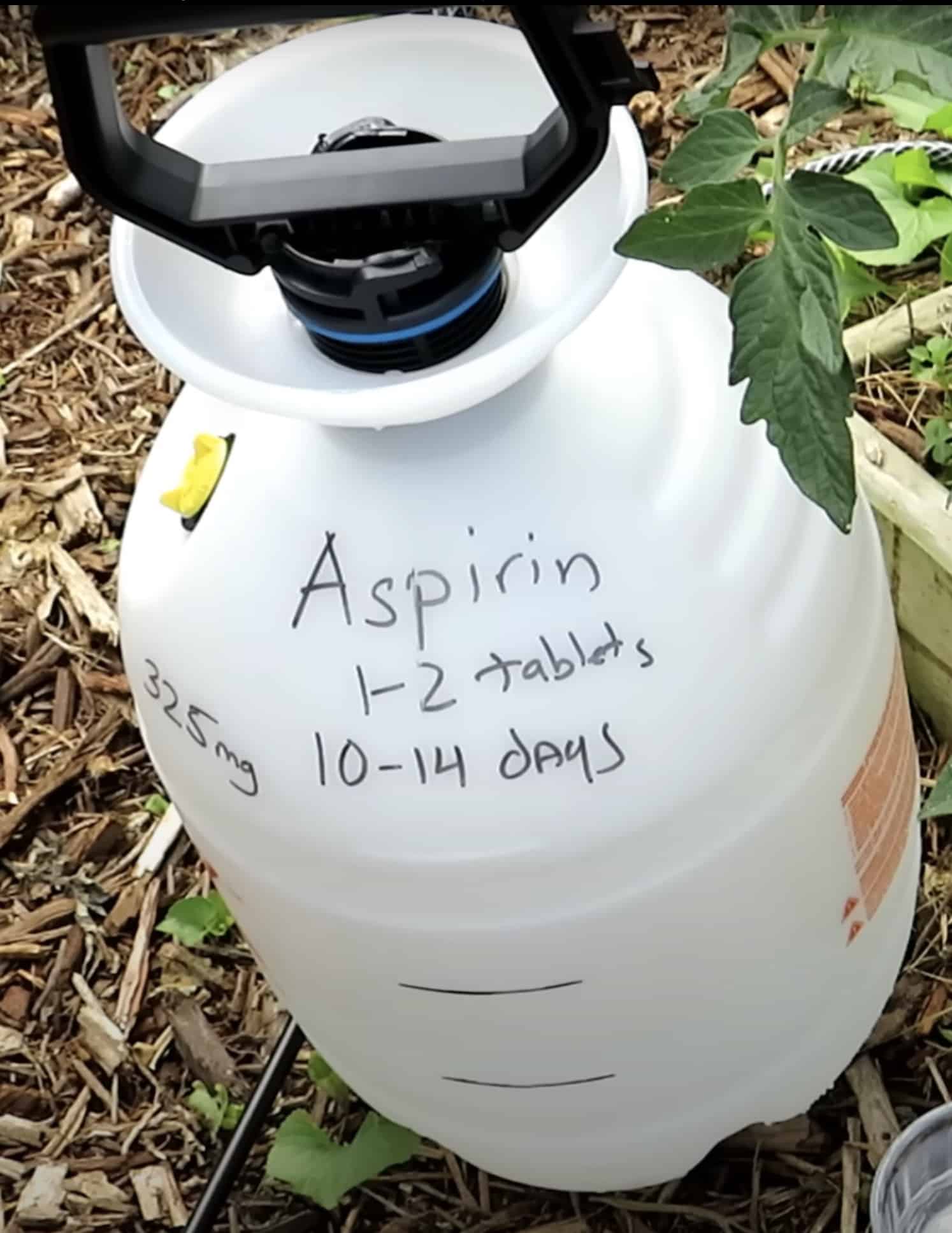
How-To: Dissolve an aspirin in a gallon of water and water plants every three weeks.
Why It Works: Salicylic acid in aspirin strengthens plants’ resistance to diseases and pests.
When to Use: Use when plants are under stress from pests, diseases, or environmental changes. It’s best for preventive care.
Pros: Aspirin strengthens plants’ natural defenses, promoting resilience against pests and diseases.
Cons: Overuse can stress plants, especially those sensitive to salicylic acid. Stick to recommended intervals.
Best Plants: Tomatoes, peppers, and roses respond well to aspirin treatments.
11. Vinegar: A Natural Weed Killer
How-To: Spray pure white vinegar on weeds, being careful to avoid nearby plants.
Why It Works: The acidity in vinegar dehydrates weeds, offering an eco-friendly herbicide.
When to Use: Use in pathways, driveways, or areas away from desirable plants. Avoid spraying on soil meant for future planting.
Pros: Vinegar is a chemical-free, affordable weed killer that’s easy to use.
Cons: It kills indiscriminately and can harm beneficial plants. Avoid windy days to minimize overspray.
Best Plants: Not suitable for plants; use only to target weeds
12. Honey for Propagating Cuttings
How-To: Dip the ends of plant cuttings in honey before planting.
Why It Works: Honey’s antibacterial properties protect cuttings while encouraging root development.
When to Use: Use when propagating cuttings to improve rooting success rates. It works well for soft-stemmed and hardwood plants.
Pros: Honey is natural, safe, and prevents fungal infections on cuttings.
Cons: It may not work as quickly as synthetic rooting hormones. Use fresh honey for best results.
Best Plants: Herbs, roses, and succulents propagate well with honey.
13. Slug Traps with Beer
How-To: Bury a shallow container near affected plants and fill it with beer.
Why It Works: Slugs are drawn to beer but can’t escape, keeping them from harming plants.
When to Use: Use when slugs are visibly damaging plants, particularly in moist environments. Refill traps regularly for effectiveness.
Pros: Beer traps are simple, eco-friendly, and effective in reducing slug populations.
Cons: Frequent maintenance is required, and traps may attract other pests.
Best Plants: Lettuce, hostas, and leafy greens benefit most from slug control.
14. Sugar Water for Beneficial Insects
How-To: Dissolve two tablespoons of sugar in a quart of water and spray it on plants.
Why It Works: Sugar attracts helpful insects like ladybugs that feed on pests like aphids.
When to Use: Apply when pests like aphids are present, and you need to attract beneficial insects to combat them.
Pros: Sugar water supports the natural ecosystem by encouraging helpful predators like ladybugs.
Cons: Overapplication can attract unwanted pests like ants.
Best Plants: Any plant prone to aphid infestations, such as roses and peppers.
15. Chamomile Tea for Seedling Care
How-To: Brew chamomile tea, let it cool, and water seedlings with it.
Why It Works: Chamomile’s antifungal properties prevent common fungal issues in young plants.
When to Use: Use when starting seeds or dealing with fungal issues in seedlings. It’s safe for all young plants.
Pros: Chamomile tea is natural, gentle, and effective at preventing damping-off disease.
Cons: Requires regular application for consistent protection.
Best Plants: Seedlings of vegetables, herbs, and flowering plants benefit from chamomile tea.
16. Baking Soda for Sweeter Tomatoes
How-To: Lightly sprinkle baking soda around the base of tomato plants.
Why It Works: Baking soda reduces soil acidity, encouraging sweeter fruit.
When to Use: Apply during fruit development to adjust soil pH. Use sparingly to avoid affecting nearby plants.
Pros: Baking soda is inexpensive and improves the flavor of tomatoes by reducing acidity.
Cons: Overuse may affect soil pH too drastically and harm other plants.
Best Plants: Tomatoes and other fruiting plants can benefit from reduced soil acidity.
17. Use Cardboard for Weed Control
How-To: Lay down cardboard as a barrier before adding mulch.
Why It Works: Cardboard blocks light, smothering weeds naturally while decomposing over time.
When to Use: Apply before mulching in areas prone to weeds. It’s especially helpful in vegetable gardens and pathways.
Pros: Cardboard is biodegradable, blocks sunlight, and smothers weeds effectively.
Cons: Needs to be replaced periodically and can attract pests like termites if left unmanaged.
Best Plants: Works well with all garden plants when used as a weed barrier.
